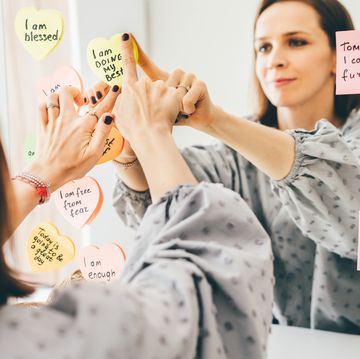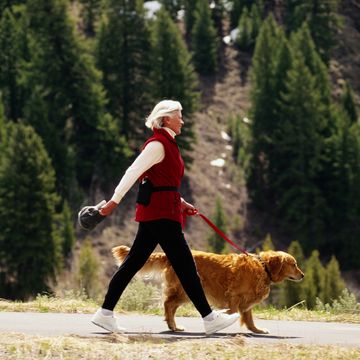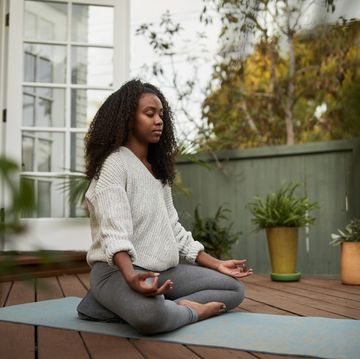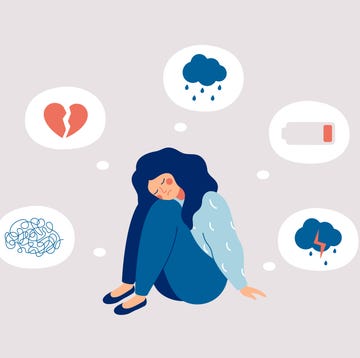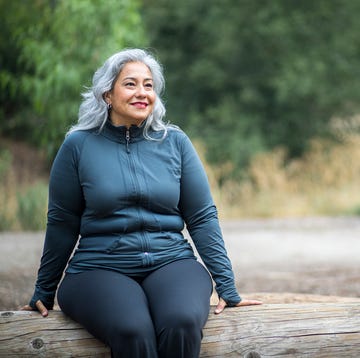When COVID-19 grew to a global pandemic in March, everyone hit the brakes on pretty much everything. This wasn’t limited to cancelling travel plans and dinners out with friends—it also meant not going to any doctors’ appointments. By the end of June, four out of 10 Americans had put off or completely avoided seeking medical care because they were worried about COVID-19. But as weeks of dealing with the pandemic have turned to months, with no end in sight, it’s become clear that we are all going to have to go back to the doctor—at least for certain visits.
Skipping important preventive care or screenings will increase your risk of missing an early warning sign that something serious is going on. But now that many doctors have started embracing online visits, you have options. Keep reading to see which in-person appointments you should keep on your calendar, which ones can be safely done virtually, and if there are any you can keep putting off until things are safer. Plus, some expert tips on how to stay safe when you’re actually in the doctors’ office.
Preventative care
The big thing to keep in mind is to stop putting off preventive care, says Nancy Beran, MD, chief medical officer of Westchester Health, which is part of Northwell Health. Because certain health issues like high blood pressure often have no outward symptoms, it’s crucial to have your doctor do a full-body exam once a year. “People think things like annual physicals are fine to delay, but we do a lot of health risk assessments there and bring you up to date on vaccines like the flu shot and pneumonia shot,” says Dr. Beran.
Women’s health appointments
When it comes to women’s health appointments, anything that is preventive or that involves testing should be done on schedule and in the doctor’s office. “Screenings like pap smears and mammograms should be done based on your doctor’s guidelines,” says Stephanie T. McNally, MD, OBGYN, of the Katz Institute for Women’s Health
which is part of the Northwell Health network. They are designed to catch warning signs for cervical cancer or breast cancer early—before the cancer progresses or spreads to other parts of your body.
You also need to keep up with in-person OBGYN visits if you’re pregnant. “You need to get certain tests done like sonograms or bloodwork,” says Dr. McNally. “And they need to happen at specific times during your pregnancy.” Delaying prenatal care can put you and your baby at risk for serious health issues such as diabetes and preterm delivery.
Other doctors’ appointments
When it comes to other doctors’ appointments, you’ll want to go in person if something needs to be visually examined. This includes visits to the ophthalmologist for eye issues or the dermatologist for an annual skin check or to examine a new rash, says Dr. McNally.
If you’re tempted to put off a doctors’ appointment until things are safer, don’t make that decision on your own. “Communicate with your health care provider to decide if it’s something you can delay,” says Dr. McNally. Just because you think an appointment is no big deal doesn’t mean that’s actually the case.
If something can’t wait, but you're nervous about going in to be seen, a telehealth appointment might be a good alternative. They’re very similar to an in-person visit—you just talk to the doctor over a video call instead. Virtual appointments are a good option for certain things like:
Initial COVID screenings
If you think you might have COVID-19, a virtual appointment is a great idea since it limits how many people you potentially expose. “The initial questioning can all be safely done through telehealth,” says Dr. Beran. “We can talk about symptoms and assess if it’s something you should wait and watch or if you should get tested.”
Issues with no visual characteristics
Virtual visits also work if you just want to talk about a health concern that doesn’t really have any visual characteristics. “I will do telehealth appointments for patients I’ve examined in person in the past who might want to talk about something like menopause symptoms,” says Dr. McNally. “That kind of counseling can easily be done remotely.”
Follow-ups
Other appointments perfect for telehealth: Follow-ups to discuss how a treatment plan is going, questions about health issues that don’t involve outward physical signs, like back pain, and visits seeking general advice, such as concerns you may have for your child’s pediatrician about developmental milestones.
Mental health
Mental health appointments with a therapist or a psychologist are also something many people are doing from home these days. “We are doing a good job treating anxiety and depression through telehealth,” says Dr. Beran. “And those are issues that are certainly spiking right now due to COVID-19 and other things going on in the world.”
It’s natural to be a little nervous the first time you see your doctor during a pandemic, but rest assured that health care offices have many systems in place to keep patients as safe as possible. “For example, most are minimizing risk and exposure to staff and other patients by seeing anyone suspected of having COVID-19 outside of normal office hours or using separate entrances for them,” says Dr. Beran. “And they also often limit how many people can come to appointments and minimize the use of waiting rooms.” On top of that, many screen visitors with temperature checks, require masks, and offer online check-ins to reduce waiting time and limit exposure to others in the office.
Also, remember to take the same precautions you do elsewhere. “Wash your hands as much as you can and bring hand sanitizer with you to use after you touch surfaces,” says Dr. Beran. “And obviously wear a mask the entire time you’re there and stay six feet away from others in waiting rooms.”






